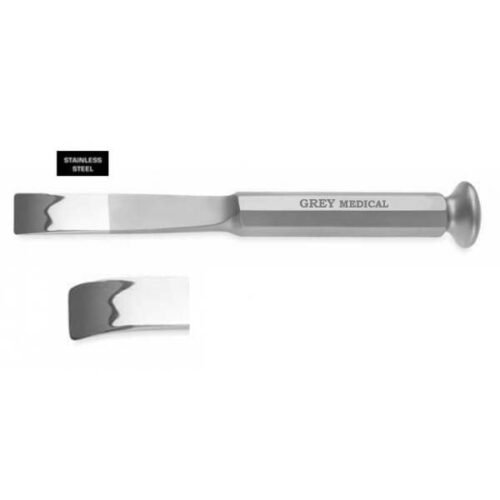Freer Septum Knife: A Precision Tool for Nasal and ENT Surgery
Freer Septum Knife: A Precision Tool for Nasal and ENT Surgery
Blog Article
The Freer Septum Knife is a specialized surgical instrument designed for precision cutting and dissection of the nasal septum during rhinoplasty, septoplasty, and other ENT (ear, nose, and throat) procedures. Freer Septum Knife for its ergonomic design and sharp, durable blade, this tool plays an essential role in achieving accurate and efficient surgical outcomes.

Design and Features
The Freer Septum Knife features a slim, lightweight handle for enhanced control and maneuverability. Its blade is meticulously crafted, often with a curved or angled design to facilitate easy access to the nasal septum and other hard-to-reach areas. The blade is sharp, allowing for clean incisions and efficient tissue dissection, minimizing trauma to surrounding structures.
Made from high-quality stainless steel or titanium, the knife offers excellent durability and resistance to corrosion, ensuring its reliability during repeated use and sterilization. Some variations include a dual-ended design, combining a septum knife on one end with a rasp or dissector on the other, increasing its versatility in surgery.
Applications in Surgery
The Freer Septum Knife is primarily used in nasal and ENT surgeries to address structural issues, improve breathing, or correct cosmetic deformities. Some of its common applications include:
- Septoplasty: The knife is used to make precise incisions in the nasal septum, allowing the surgeon to correct deviations, remove excess cartilage or bone, and restore proper alignment.
- Rhinoplasty: In cosmetic nasal surgery, the Freer Septum Knife assists in reshaping the septum and nasal structures for improved aesthetics and functionality.
- Turbinate Reduction: The knife can be used to carefully remove or reduce the size of nasal turbinates to improve airflow in patients with nasal obstruction.
- Polypectomy: For the removal of nasal polyps, the sharp and precise blade ensures clean dissection with minimal trauma.
The ergonomic design of the knife allows surgeons to perform intricate procedures with precision and control, minimizing patient discomfort and promoting faster recovery.
Advantages
The Freer Septum Knife offers several advantages that make it a preferred tool for nasal and ENT surgeries:
- Precision: The sharp blade ensures clean, accurate incisions, reducing tissue trauma and improving surgical outcomes.
- Versatility: Its design is suitable for various procedures, from septoplasty to rhinoplasty and beyond.
- Durability: Crafted from premium materials, the knife withstands rigorous use and repeated sterilization.
- Ergonomic Design: Lightweight and balanced, it minimizes hand fatigue during long procedures.
- Safety: The sharp, precise blade reduces the risk of unintended damage to surrounding tissues.
Care and Maintenance
To maintain the performance and longevity of the Freer Septum Knife, proper care and maintenance are essential. The knife should be cleaned thoroughly after each use to remove blood, tissue, or other debris. Regular sterilization in an autoclave or other approved methods ensures it remains safe for use in surgical settings. Routine inspections for signs of wear or dullness are necessary, and any damaged blades should be replaced immediately to prevent compromised performance.
Conclusion
The Freer Septum Knife is an indispensable tool in nasal and ENT surgeries, combining precision, versatility, and durability to meet the demands of modern surgical practices. Its ergonomic design and sharp, high-quality blade enable surgeons to perform delicate procedures with confidence and efficiency. Whether used in functional or cosmetic nasal surgeries, the Freer Septum Knife continues to be a reliable instrument for achieving optimal outcomes in patient care. Report this page